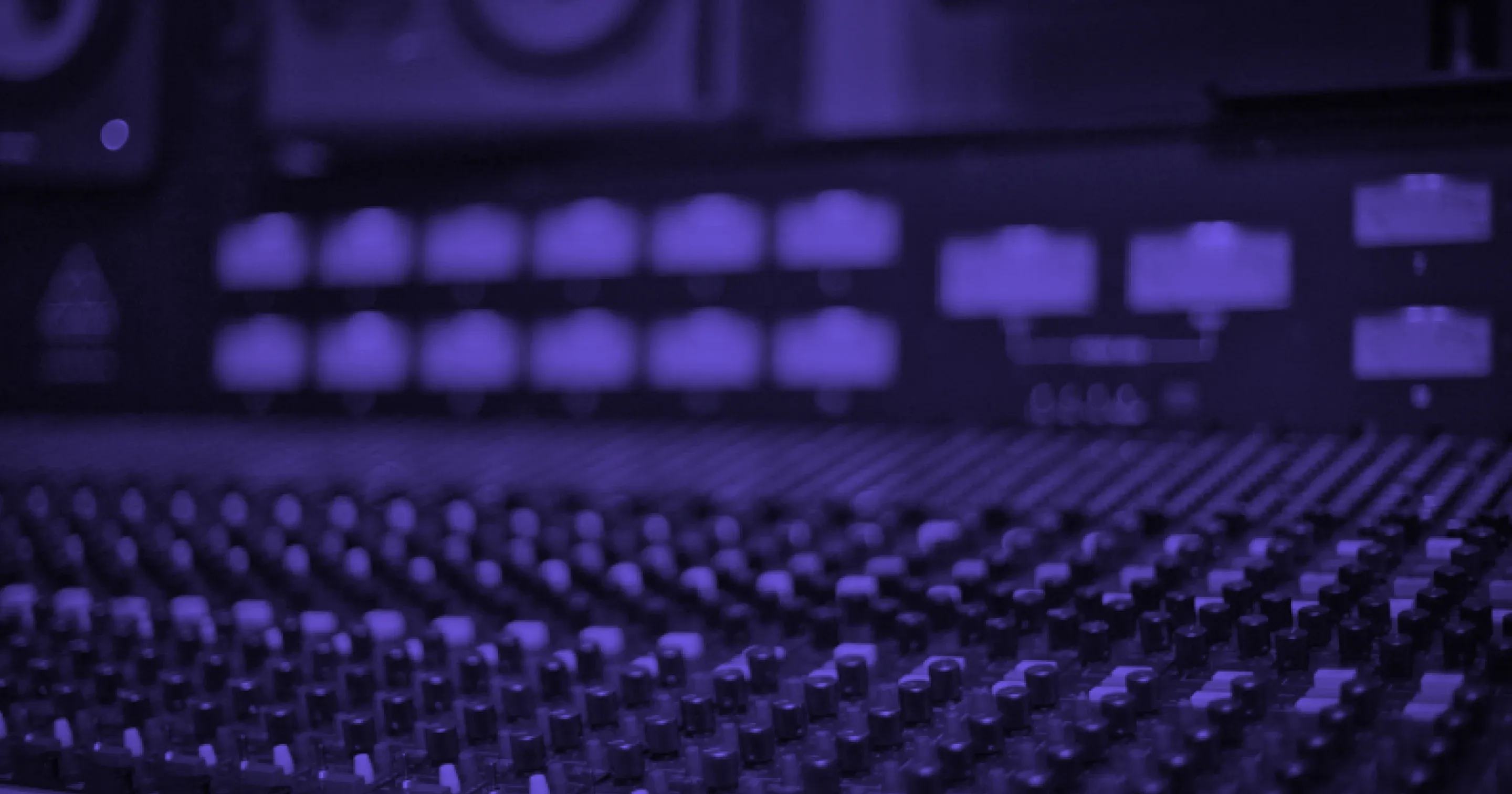
What's the Difference Between Mixing and Mastering?
Learn the differences between mixing and mastering in music production. Discover how essential post-production stages shape your sound for a professional finish.
Introduction
Even the most compelling songs require careful post-production to connect with an audience truly. Mixing and mastering are not afterthoughts but crucial stages in unlocking a recording's full potential.
While often discussed together, mixing and mastering are distinct yet equally essential steps in converting raw audio into a polished, professional final product. Grasping their roles is fundamental for any musician or producer crafting a sonically impactful experience.
In this article, we'll clarify the differences between music mixing and mastering and examine a few notable albums often cited for their subpar post-production, illustrating the importance of these crucial stages.
Mixing: Sculpting the Sonic Landscape
Mixing is blending individual recorded tracks into a cohesive stereo (or surround) field. Think of it as carefully weaving together all the separate instrumental and vocal performances to create a balanced song. The mixing engineer acts as an audio architect, making important decisions about each element's level, placement, and character.
Great mixes start with great recordings. While mixing can definitely enhance a good performance, it's not a magic fix for flawed or poorly captured audio. So, prioritize getting clean, well-executed recordings before moving to the mixing stage.
For example, using a pop filter on vocal recordings is a simple technique that significantly reduces distracting plosive noises, leading to a cleaner and higher-quality recording. Poor audio quality can’t be fixed by mixing.
Ultimately, mixing is driven by your artistic vision. There's no definitive"right"or"wrong"approach; it's about achieving the sound you hear in your head and what best serves the music's style. Different genres and artistic intentions naturally lead to vastly different sonic landscapes.
The key goals and tasks involved in mixing include:
- Balancing Levels: Ensure every instrument and vocal sits at the right volume relative to everything else. A kick drum shouldn't drown out the delicate nuances of a guitar melody, and vocals should be clear and present without overpowering the backing track. A well-balanced mix ensures that the emotional intent of each performance is conveyed to the listener.
- Panning: Strategically placing sounds within the stereo image – left, right, or somewhere in between – to create a sense of space, depth, and separation between instruments. This can add a three-dimensional feel to the music.
- EQ (Equalization): Sculpting the tone of each element. EQ allows the mixing engineer to adjust the frequency content of individual tracks with precision. This is crucial for eliminating muddy low-end buildup in a bass guitar, adding sparkle to a vocal's high frequencies for better clarity, or carving out sonic space so that the punch of the kick drum doesn't clash with the warmth of a bassline.
By carefully shaping each instrument's tonal characteristics, you ensure that every element in the mix has its distinct place and contributes to the overall clarity.
- Dynamics Processing (Compression, Gate, Expansion): Compression reduces the difference between a sound's loudest and quietest parts, making it more consistent and punchy. Gates eliminate unwanted noise below a certain threshold, while expansion increases the dynamic range. These tools help create a polished and controlled sound for each individual track.
- Adding Effects (Reverb, Delay, Chorus, etc.): Reverb can simulate the sound of different acoustic spaces, delay can add rhythmic echoes, and chorus can create a sense of thickening or movement. These effects on vocals and instrumentation add depth, texture, and emotional nuance to the individual elements within the mix.
- Creating Automation: Programming changes to various parameters (like volume, panning, and effects levels) throughout the song add movement and interest and emphasize key musical moments.
Mixing is a creative process that requires technical skill and an artistic ear.
These are some of the steps that go into mixing. There’s no one correct way of mixing music. Many genres and artists' signature sounds favor different results. A loud bass drum that occupies most of the sonic space is sometimes preferable. In other instances, the bass drum should be more felt than heard. Whether you want a processed or natural sound is a matter of individual taste. The important thing when it comes to mixing is to understand what you’re doing, regardless of the goal of the final product. A poorly mixed track can be tiring, hindering the listener's enjoyment.
Mastering: Polishing for Distribution
The song moves on to the mastering stage once the mix is complete and all the elements sound harmonious. This is the final stage of audio production, where a mastering engineer takes the finished stereo (or surround) mix and prepares it for distribution across various playback systems and platforms. Think of it as the final quality control and optimization stage.
The key goals and tasks of mastering include:
- Overall Level Maximization: Ensuring Competitive Loudness. This involves making the track competitively loud for commercial release without introducing unwanted distortion or clipping. Modern mastering often considers LUFS (Loudness Units Full Scale) to meet streaming platform standards.
- EQ for Overall Tone: Subtle Refinements for Consistent Playback. Making subtle and broad adjustments to the overall frequency balance of the entire mix ensures it sounds consistent and translates well across different playback systems – from car stereos to headphones to club sound systems.
- Compression for Glue and Cohesion: Unifying the Sounds. Gently compressing the entire mix creates a sense of unity and sonic "glue", making all the elements feel more integrated.
- Stereo Enhancement: Carefully Expanding the Soundstage. Widening or narrowing the stereo image of the entire mix can enhance spaciousness, but overdoing it can lead to playback issues.
- Adding Fades and Silences: Creating Smooth Transitions. This involves creating smooth transitions at the beginning and end of songs for a professional feel.
- Sequencing Tracks (for albums/EPs): This involves ensuring consistent levels and sonic character across all songs on a release to create a cohesive listening experience.
- Creating Master Files in Appropriate Formats: Preparing for Distribution. This involves preparing the final audio files in the required formats and specifications for different distribution platforms (e.g., streaming services, CD manufacturing, vinyl).
If mixing is like cooking the individual ingredients, mastering is akin to adding the final touches of salt and pepper and the final plating. The mastering engineer ensures the presentation of the meal is perfect and consistent.
It takes a while to develop a good ear for mastering. While learning, utilize AI in your music production to analyze and understand the subtle qualities that define a well-mastered song, aiding your ear training.
They act as a critical listener with specialized tools and knowledge of industry standards to optimize the track for the broadest possible audience. They use mastering-grade EQs, compressors, limiters, and stereo enhancers to fine-tune the final stereo mix's overall tone, loudness, and consistency, ensuring it sounds great on any playback system. When mastering a song, it's crucial to listen to the mastered track on various playback systems to ensure it translates well between all.
Why Mixing and Mastering Matter
It's essential to understand that mixing and mastering are not interchangeable, and both are vital for a professional-sounding final product. A great master cannot magically fix a poorly mixed song. If the individual tracks are unbalanced or muddy, no amount of mastering will completely rectify those fundamental issues.
Conversely, even a brilliantly mixed song can fall short of its potential if it's not properly mastered for consistent playback and competitive loudness. A poorly mastered track might sound quiet or distorted compared to professional releases, diminishing the listener's experience.
Ultimately, adequate mixing and mastering contribute to clarity, impactful dynamics, balanced frequencies, a well-defined stereo image, and a final product that emotionally resonates with the listener, effectively conveying the artist's intent.
Case Studies in Post-Production Challenges
Several famous albums have faced criticism for their post-production quality, highlighting the importance of effective mixing and mastering:
These examples illustrate how suboptimal mixing and mastering can hinder even great performances and songwriting.
The Power of Reference Tracks in Mixing and Mastering
A valuable technique during mixing and mastering is using reference tracks. These are professionally produced songs in a similar genre that you admire sonically. When mixing, reference tracks can help guide your decisions on levels, EQ, panning, and overall sonic character.
During mastering, they provide a benchmark for loudness, frequency balance, and overall polish, helping you achieve a commercially competitive sound without sacrificing dynamics or introducing distortion. Using reference tracks doesn't limit creativity but offers a helpful roadmap for the overall sonic character you're striving for.
Remember to choose a reference track that's sonically relevant to your project. For instance, if you're aiming for a 70s vibe within a particular genre, your reference should come from that era and genre, not a stylistically different track like a modern hip-hop song.
Ideally, mixing and mastering are seen as collaborative stages, even if sometimes performed by the same individual. A good mix provides a solid foundation for the mastering engineer to work their magic, adding the final layer of polish that ensures the track sounds its best on any playback system. Clear communication between the artist, mixing engineer, and mastering engineer is key to a successful outcome.
Conclusion
Mixing and mastering are two distinct yet indispensable processes in the intricate world of audio production. Mixing is the art of sculpting individual sounds into a cohesive whole, while mastering is the science of optimizing that finished mix for distribution and consumption.
Just as a perfectly cooked meal needs an artful presentation to be fully appreciated, a well-mixed song requires professional mastering to achieve its full sonic potential and reach its audience with impact and clarity. Understanding and respecting the unique roles of mixing vs mastering is key to unlocking the true sonic potential of any musical creation.
Collaborate with Award Winning Engineers with Musiversal
The DIY nature of modern bedroom production can pressure you to master every aspect yourself. However, you don't have to. If mixing isn't your strength or passion, outsourcing it to professional audio engineers allows you to focus on your core talents.
With a Musiversal Unlimited membership, you can access over 90 professional artists for unlimited recording and post-production sessions.
We also offer educational services for those eager to learn mixing. Our expert engineers provide valuable feedback on your mixes and overall production quality. You can also book a meet-and-greet session to discuss post-production and get tailored answers to your specific questions.
For more actionable tips on music production, marketing, songwriting, music theory, and beyond, check the Musiversal blog, updated weekly with fresh insights and advice.
Your Music, No Limits.
Join the Waitlist